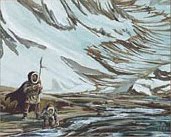After you’ve finished drafting and building your magic deck using 24 or 25 cards out of 42, what purpose do the other cards serve? Technically they’re sideboard, and maybe three or four of them are actual sideboard, but that still leaves a lot of wasted cards. Put these cards to use by disrupting other players deck building strategies, otherwise known as hate drafting.
Most players intuitively know that they shouldn't pass that Massacre Wurm along, even if they aren’t playing black; it’s just too powerful to have floating around the table. But effective hate drafting should go further than this.
Let’s start with some numbers. You’re going to draft 42 cards. I like to consider the last three picks from each pack to be completely random when planning a draft strategy, so we actually choose 33 cards. If 25 of those go into our deck that still gives us eight picks to use against our opponents. Clearly, we need to extend our hate drafting into uncommons and commons.
First, it’s important to take cards that will hose your deck. If you play red/blue you might want to take Glissa's Courier out of circulation to protect yourself. This strategy is straightforward once you have an idea what your deck is going to look like.
Second, identify key commons and uncommons that other archetypes use a lot. R/W battle cry decks love to get Goblin Wardriver, so take him if you can. Any green deck is happy to get Viridian Emissary, one of the few forms of mana ramp in Mirrodin Besieged, so snag those too even if you don’t play green. By depriving your opponents of their most efficient late picks you make your own deck that much stronger relative to the field.
